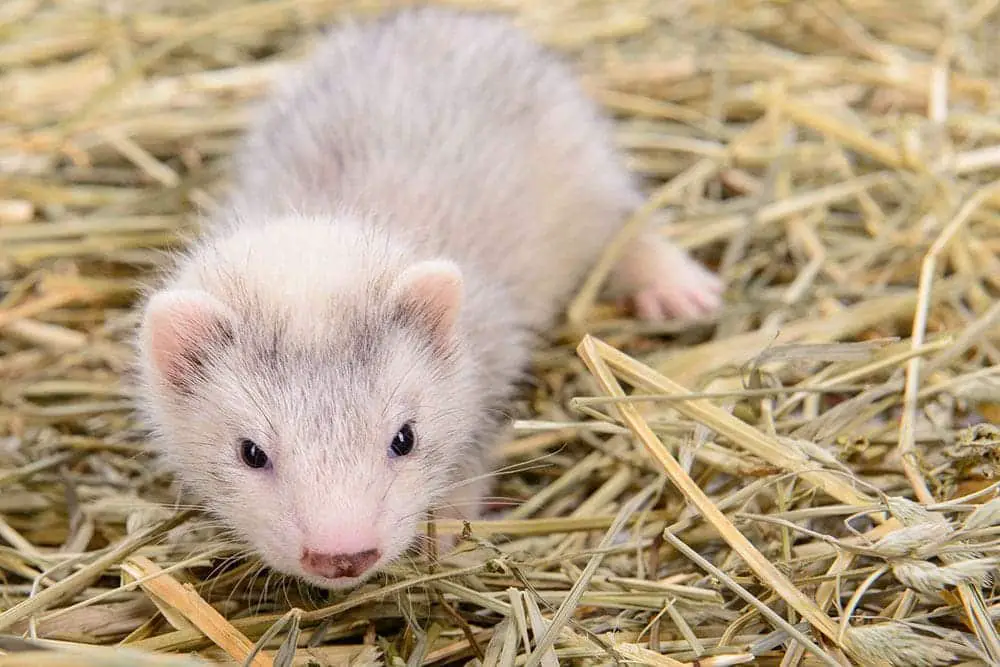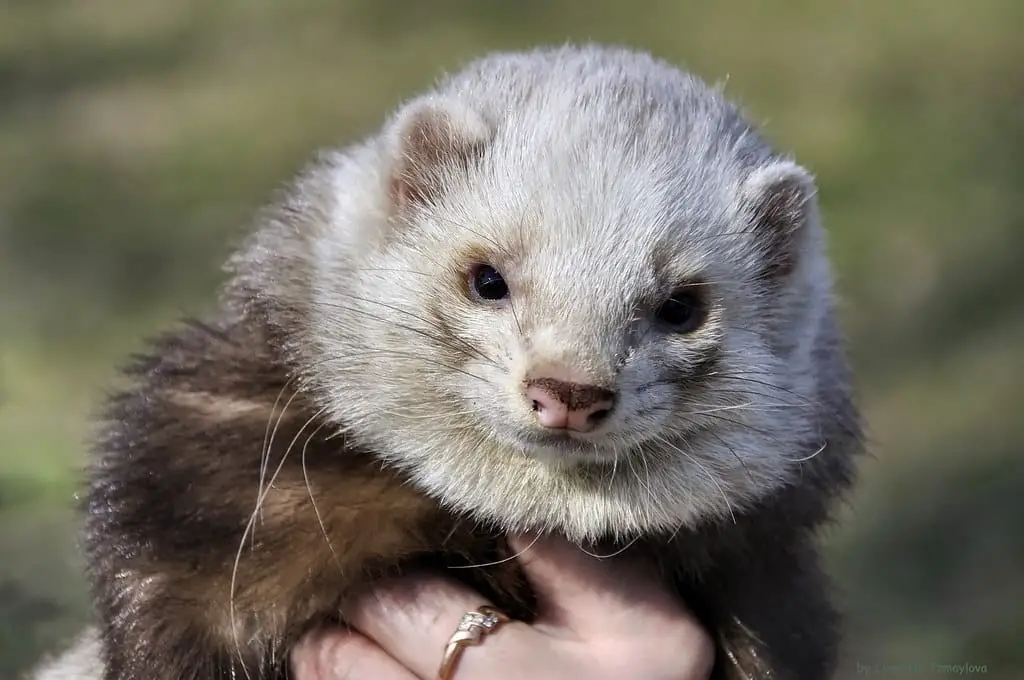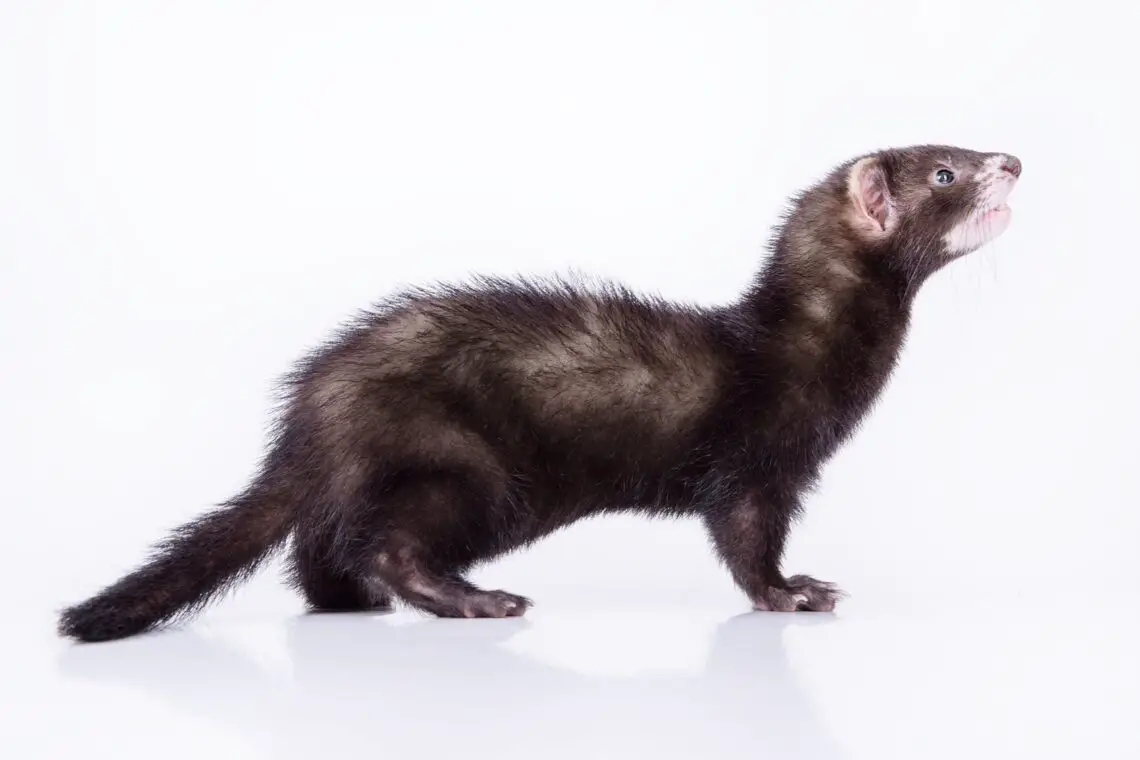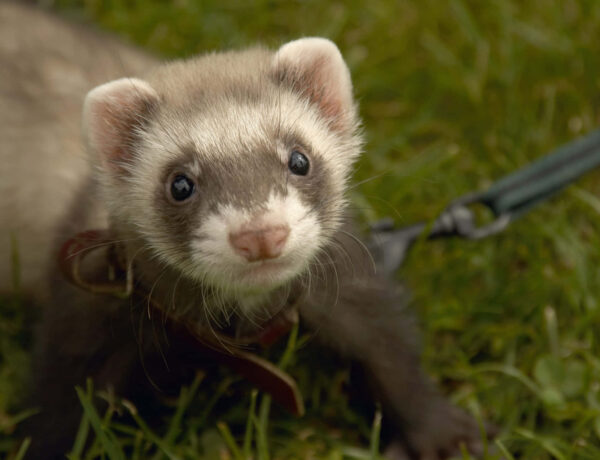Introduction
Are Ferrets A Rodent: Ferrets, with their sleek bodies, mischievous personalities, and playful nature, often pique the curiosity of those interested in the animal kingdom. One common question that arises when discussing ferrets is whether they belong to the category of rodents. To answer this question, we must delve into the fascinating world of taxonomy and biology to explore the classification of ferret food and their relationship to rodents. We will unravel the evolutionary history and unique characteristics that set ferrets apart from rodents while shedding light on their distinct identity within the animal kingdom. Ferrets are captivating creatures that have been domesticated for thousands of years, primarily for their hunting skills and companionship.
While they may share some physical characteristics with certain rodents, such as their elongated bodies and sharp teeth, the question of whether ferrets are indeed rodents is a matter of scientific classification. To provide a comprehensive answer, we will examine the taxonomy and biological characteristics of ferrets, which belong to a distinct family of carnivorous mammals known as Mustelidae. Within this family, ferrets are closely related to other carnivores like weasels, badgers, and otters. Unlike rodents, which belong to the order Rodentia, ferrets have different dental and anatomical features that distinguish them from rodents, including a lack of continuously growing incisors, a hallmark trait of true rodents.
We will delve deeper into the evolutionary lineage and defining characteristics of ferrets, highlighting the reasons why they are not classified as rodents but instead occupy a unique place in the diverse world of mammals. One of the most significant differences between ferrets and rodents lies in their dental structure. Rodents are characterized by continuously growing incisor teeth that they use for gnawing and chewing on various materials. In contrast, ferrets have non-continuously growing incisors, which means they do not possess the ever-growing teeth typical of rodents. This distinction in dental anatomy reflects their separate evolutionary paths.

Why aren t ferrets rodents?
Body shape is another important difference between ferrets and rodents. Most rodents have sturdy little bodies with short limbs and long tails. Ferrets share a sturdy body and short limbs, but their flexible frame is much longer.
Dental Anatomy: One of the primary distinctions between ferrets and rodents lies in their dental structure. True rodents are characterized by continuously growing incisors, which they use for gnawing and chewing through various materials. These ever-growing incisors are a defining feature of the rodent order. In contrast, ferrets have non-continuously growing incisors. This difference in dental anatomy sets them apart from rodents and aligns them more closely with other carnivorous mammals.
Dietary Preferences: Ferrets are carnivores by nature. In the wild, their diet primarily consists of small mammals, birds, and eggs. Their carnivorous diet is in stark contrast to the herbivorous or omnivorous preferences of rodents, which consume plant materials, seeds, and insects. The distinct dietary requirements of ferrets reflect their evolutionary adaptation to a different ecological niche.
Behavioral Characteristics: Ferrets exhibit behaviors typical of carnivorous mammals. They are natural hunters, known for their stalking, pouncing, and capturing prey. Their playful and curious nature aligns with their carnivorous instincts. In contrast, rodents have behaviors shaped by their herbivorous or omnivorous diets, which include foraging and burrowing activities.
Evolutionary Lineage: Ferrets belong to the family Mustelidae, which includes various other carnivorous mammals like weasels, badgers, and otters. This family is distinct from the order Rodentia, which comprises true rodents like mice, rats, and guinea pigs. Ferrets share a more recent common ancestor with other Mustelidae members than with rodents, which have a different evolutionary history.
Are ferrets feline or rodent?
If you are considering a domesticated ferret as a pet, here are some important things to know. Ferrets aren’t rodents – they are actually part of the weasel family! Ferrets are playful and affectionate like dogs and independent like cats, making them a perfect companion for some people.
Ferrets are members of the family Mustelidae, which includes carnivorous mammals like weasels, badgers, and otters. Cats, on the other hand, belong to the family Felidae. While ferrets and cats share some carnivorous tendencies and may be kept as pets, they are separate branches on the mammalian family tree, with different evolutionary histories and characteristics. Ferrets have long, slender bodies with a distinctive, elongated shape, while cats have a more compact body structure. Cats also possess retractable claws, a feature absent in ferrets.
Ferrets are not rodents. True rodents belong to the order Rodentia and include species like mice, rats, squirrels, and guinea pigs. The primary characteristic that defines rodents is their continuously growing incisors, which they use for gnawing and chewing. Ferrets, in contrast, have non-continuously growing incisors. This dental distinction is a fundamental factor that sets them apart from rodents.
Ferrets are classified in the class Mammalia, order Carnivora, and family Mustelidae. Their taxonomic classification places them among carnivorous mammals. Their evolutionary lineage is closely related to other members of the Mustelidae family. Cats, as mentioned earlier, belong to the family Felidae within the order Carnivora, and their evolutionary history is distinct from that of ferrets.
Are ferrets and mice related?
Contrary to popular belief, ferrets are not rodents. They are not closely related to other small animals found in pet stores such as rats, mice, hamsters, and guinea pigs. Instead, ferrets are more closely related to predatory animals like dogs and cats (broadly speaking).
Ferrets belong to the order Carnivora and the family Mustelidae. They are carnivorous mammals and are closely related to other members of the Mustelidae family, such as weasels, badgers, and otters. Mice, on the other hand, are classified in the order Rodentia and belong to the family Muridae. They are rodents, a group of mammals characterized by continuously growing incisor teeth and a wide range of species like rats, squirrels, and hamsters.
Ferrets are carnivores, and their diet mainly consists of meat, with a preference for small mammals, birds, and eggs. They have evolved to be efficient hunters.
Mice are herbivores or omnivores, depending on the species. They primarily consume plant material, seeds, and insects. Their dietary preferences differ significantly from those of ferrets.
Ferrets have a long, slender body, sharp claws, and a carnivore’s dentition, including sharp, non-continuously growing incisors. Mice, in contrast, have a small and compact body, continuously growing incisors that they use for gnawing, and behaviors suited for their rodent lifestyle, such as burrowing and foraging.
Ferrets and mice have followed distinct evolutionary paths and adapted to different ecological niches. Ferrets are carnivorous predators, while mice are small herbivorous or omnivorous creatures with various survival strategies.
Do rats hate the smell of ferrets?
Predator Smell
According to a study in The Journal of Neuroscience, the stress hormones of rats increased when they were exposed to the odor of cats and ferrets. The rodents also showed defensive behaviors such as prolonged rearing, grooming inhibition, and avoidance of the item that reeks of predator scent.
Predator-Prey Relationship: Rats are known for their keen sense of smell, which they use to detect predators. Ferrets, as carnivorous mammals, have a distinct scent that rats can recognize as a potential threat. This natural aversion to the scent of ferrets is an adaptive behavior that helps rats avoid becoming prey.
Fear and Stress Response: When rats sense the presence of ferrets or their scent, it can trigger stress and fear responses. These responses may include increased heart rate, heightened alertness, and avoidance behaviors. Rats may try to hide or flee to escape the perceived threat.
Avoidance Behavior: Rats have evolved to be cautious and avoid areas where they detect the presence of predators. If they associate the scent of ferrets with danger, they are likely to steer clear of places or objects with that scent.
Natural Instincts: Rats have evolved to rely on their sense of smell as a survival mechanism. Their ability to detect and react to predator scents is crucial for their survival in the wild. Ferrets, being carnivorous hunters, emit scents that signal potential danger to rats.
Are ferrets friendly?
Ferrets have become common household pets in the United States, and their curious and friendly nature makes them suitable pets for many.
Social Creatures: Ferrets are inherently social animals. In the wild, they live in groups called “businesses” and thrive on social interaction. As pets, they seek companionship and enjoy spending time with their human owners.
Playful and Curious: Ferrets have a playful and curious disposition. They are often described as “clowns” due to their entertaining antics. Their boundless energy and love for games make them delightful companions for people of all ages.
Affectionate: Ferrets are known to form strong bonds with their human caregivers. They often seek physical contact and enjoy cuddling and snuggling. Their affectionate behavior can create a deep sense of connection between ferret owners and their pets.
Adaptable: Ferrets are highly adaptable animals. They can adjust to various living environments, making them suitable for both apartment and house living. Their small size and playful demeanor make them ideal for indoor living spaces.
Intelligent: Ferrets are intelligent creatures and can be trained to respond to commands and litter box trainings. Their intelligence, combined with their social nature, makes them trainable and interactive pets.
Are ferrets aggressive?
Aggression As A Personality Treat
They are true biters and they will bite everything and everyone that comes in the way. One in a hundred ferrets can be a true biter and that might be their nature, but that doesn’t mean you can’t handle them.
Social Animals: Ferrets are social creatures by nature. In the wild, they live in groups called “businesses” and rely on social interaction for companionship and security. As pets, they tend to form strong bonds with their human caregivers and, when properly socialized, are generally friendly and affectionate.
Playfulness: Ferrets are known for their playful and curious nature. They have a lot of energy and enjoy playing games, exploring their environment, and engaging in interactive play with their owners. Playfulness is a natural behavior for ferrets and is not a sign of aggression.
Territorial Behavior: Like many animals, ferrets can exhibit territorial behavior, especially when they feel their living space is being invaded by other animals or unfamiliar humans. This territoriality can sometimes be mistaken for aggression. It’s important to give ferrets a designated and secure living space where they can feel safe.
Training and Socialization: Proper training and socialization from a young age are essential for preventing aggressive behaviors in ferrets. Early socialization with humans and other animals can help them become well-adjusted and less likely to display aggressive tendencies.
Are ferrets intelligent?
Matulich outlined all the ways that intelligence in animals is usually measured and ranked ferrets in the most common categories: Ability to Problem Solve: ferrets rank above dogs and cats and some small primates. The weasel family is famously known for their ability to figure out how to get into just about anything.
Problem Solving: Ferrets are natural problem solvers. They have a curious and inquisitive nature, often exploring their surroundings and attempting to figure out how things work. This curiosity can lead them to find creative solutions to navigate obstacles, access hidden treats, or escape from confined spaces.
Learning and Training: Ferrets are trainable and can learn various commands and behaviors. Basic training, such as litter box training and responding to their names, is commonly accomplished by ferret owners. They can also be taught tricks and commands, much like dogs.
Memory: Ferrets have a good memory for their environment and the locations of hidden objects. They can remember where they’ve hidden their toys or treats and will often return to these spots to retrieve them later.
Social Intelligence: Ferrets are highly social animals that can recognize and respond to human and other animal cues. They can differentiate between their human caregivers and respond to their voices and body language.
Is Kangaroo a rodent?
Kangaroos and wallabies are marsupials that belong to a small group of animals called macropods. They are only found naturally in Australia and Papua New Guinea. Most macropods have hind legs larger than their forelimbs, large hind feet and long muscular tails which they use for balance.
Taxonomy: Kangaroos are marsupials, a unique group of mammals characterized by giving birth to relatively undeveloped young and carrying them in a pouch. In contrast, rodents belong to the order Rodentia, a separate category of mammals that includes species like mice, rats, squirrels, and beavers. These two orders are taxonomically distant from each other.
Dental Structure: One of the most significant differences between kangaroos and rodents is their dental structure. Kangaroos, like other marsupials, have a set of specialized teeth adapted for their herbivorous diet. They possess large molars for grinding plant matter. Rodents, on the other hand, have continuously growing incisors in the front of their mouths, which they use for gnawing and chewing.
Size and Anatomy: Kangaroos are large marsupials known for their powerful hind legs and distinctive hopping locomotion. Rodents come in various sizes and shapes, but they typically have smaller bodies and do not hop like kangaroos.
Geographic Distribution: Kangaroos are primarily found in Australia and nearby regions, while rodents are widespread and can be found on every continent except Antarctica. This difference in geographic distribution reflects their distinct evolutionary histories.

Conclusion
Through an examination of their dental anatomy, dietary preferences, behavioral characteristics, and evolutionary lineage, it becomes evident that ferrets rodents belong to the family Mustelidae, a group of carnivorous mammals, and are distinctly separate from the order Rodentia, which includes true rodents like mice and squirrels. Understanding the classification and biological distinctions among different animal species not only deepens our knowledge of the natural world but also highlights the remarkable diversity and complexity of life on Earth. Ferrets, with their carnivorous nature, playful behavior, and unique place in the animal kingdom, continue to capture our fascination and remain a testament to the intricate tapestry of life forms that share our planet.
The distinction between ferrets and rodents serves as a compelling example of how taxonomy and evolutionary history play a crucial role in organizing the vast array of life forms on our planet. While ferrets may share certain superficial physical features with rodents, their dental structure, dietary preferences, and behavior align them more closely with other carnivorous mammals within the Mustelidae family. This classification matters not only from a scientific perspective but also in practical terms, as it informs our understanding of ferrets’ unique needs, behaviors, and care requirements, especially when keeping them as pets. Recognizing that ferrets are carnivores underscores the importance of providing them with an appropriate diet and environment that meets their biological needs.
In a broader context, the distinction between ferrets and rodents reflects the intricacy of biological diversity and the ongoing process of scientific discovery. It reminds us of the constant need to refine our knowledge and understanding of the natural world. As we continue to explore and learn about the fascinating creatures that inhabit our planet, we gain a deeper appreciation for the rich tapestry of life and the diverse roles each species plays in the ecosystem. Ultimately, the question of whether ferrets are rodents not only offers insights into the world of these captivating animals but also highlights the ever-evolving nature of scientific inquiry and our enduring curiosity about the fascinating creatures that share our Earth.





No Comments